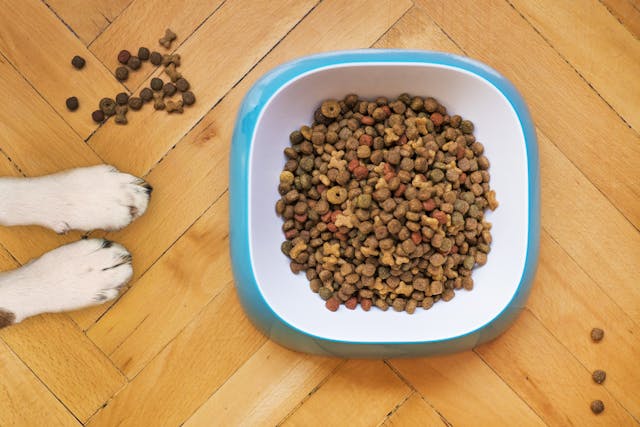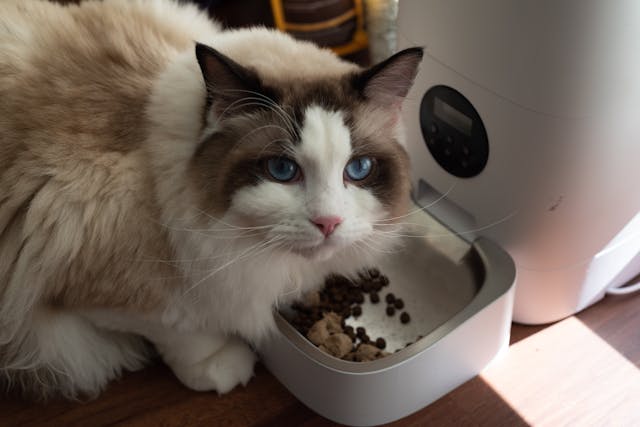Pet Nutrition Demystified: What’s Really in Your Pet’s Food?
As loving pet owners, we want the very best for our furry companions—including what goes into their bowls. But pet food labels can be confusing, marketing claims are often misleading, and not all ingredients are created equal. Understanding what’s really in your pet’s food is key to supporting their health, longevity, and overall well-being. Here's a breakdown to help you decode the mysteries of pet nutrition.

Decoding the Ingredients List
Just like in human food, pet food ingredients are listed by weight. This means the first few items are the most significant parts of the formula.
-
Meat vs. Meat Meal:
-
Whole meats like “chicken” or “beef” contain water weight, meaning less protein per pound once cooked.
-
Meat meals (e.g., “chicken meal”) are rendered and dried, offering more concentrated protein.
-
By-products:
Often controversial, by-products can include nutritious organ meats but may also contain low-quality filler if not properly sourced. -
Grains and Fillers:
Ingredients like corn, wheat, and soy are often used to bulk up food but may have limited nutritional value. Some pets also have sensitivities to these.
Marketing vs. Reality
Labels like “premium,” “natural,” or “holistic” sound appealing, but they aren’t tightly regulated.
-
“Grain-Free” doesn’t always mean healthier. Some grain-free diets have been linked to heart issues in dogs due to imbalanced ingredients.
-
“Organic” or “Human-Grade” must meet stricter standards, but always check for certifications.
-
Avoid brands that rely heavily on buzzwords without clear nutritional profiles.
What Nutrients Do Pets Really Need?
Pets require a balance of six essential nutrients:
-
Protein (for muscle maintenance)
-
Fats (for energy and coat health)
-
Carbohydrates (for digestible energy)
-
Vitamins
-
Minerals
-
Water
Cats, being obligate carnivores, need more animal-based protein and taurine. Dogs are omnivores and can benefit from a wider variety of ingredients, but they still need animal protein for optimal health.
Reading the Guaranteed Analysis
The guaranteed analysis tells you the minimum (or maximum) levels of key nutrients like:
-
Crude Protein
-
Crude Fat
-
Crude Fiber
-
Moisture
Compare this info across brands, and consider your pet’s specific needs (e.g., high-protein for active dogs, low-fat for overweight pets).
Wet vs. Dry vs. Raw Food
-
Dry food (kibble):
Convenient and cost-effective, but may be lower in moisture content. -
Wet food:
Higher moisture helps with hydration and palatability, but can be more expensive. -
Raw or Fresh food:
Mimics ancestral diets and often includes whole ingredients, but requires proper handling and balance to be safe and effective.
Red Flags to Watch For
-
Unidentified meats like “animal fat” or “meat by-product” with no specified source.
-
Artificial preservatives (e.g., BHA, BHT).
-
Added colors or dyes that serve no nutritional purpose.
-
Excessive fillers that dilute nutrient density.

Talk to Your Vet (or a Veterinary Nutritionist)
Every pet is unique. Age, breed, activity level, allergies, and medical conditions all affect dietary needs. A vet or certified pet nutritionist can help you:
-
Choose the right type of food
-
Adjust portion sizes
-
Manage weight or special health concerns
-
Evaluate supplements if necessary
Final Thoughts
Your pet’s food is more than just a daily routine—it’s their foundation for health. By understanding the ingredients, reading labels critically, and choosing quality over marketing, you can make informed decisions that truly benefit your furry friend. Nutrition doesn’t have to be a mystery—it just needs a closer look.












